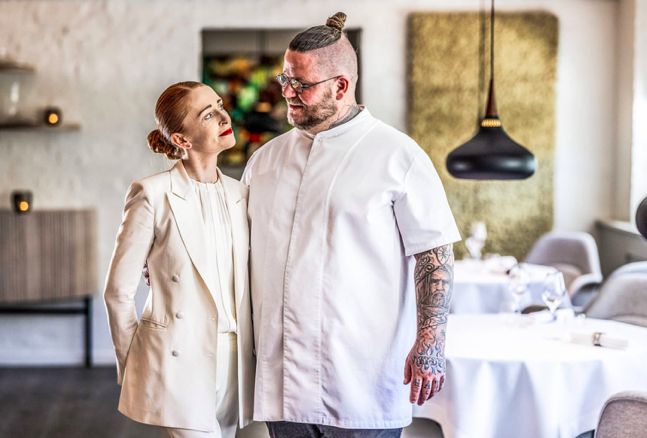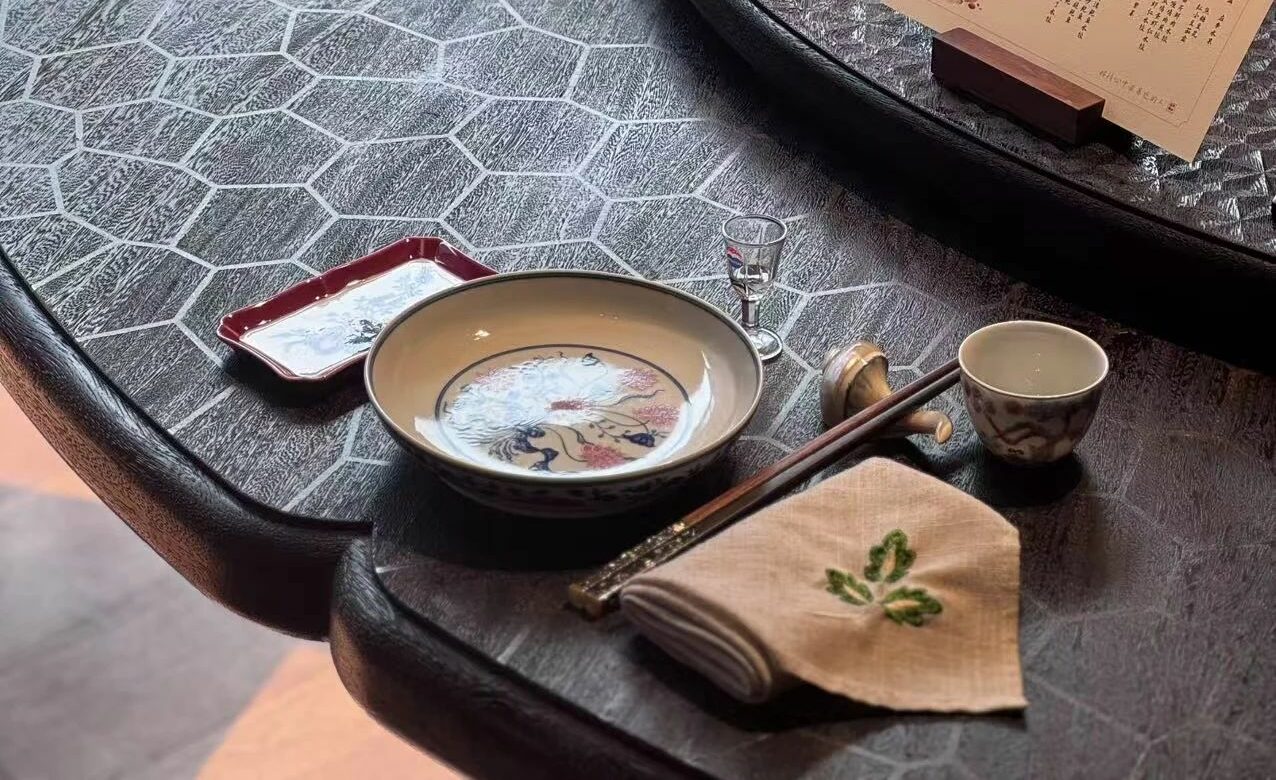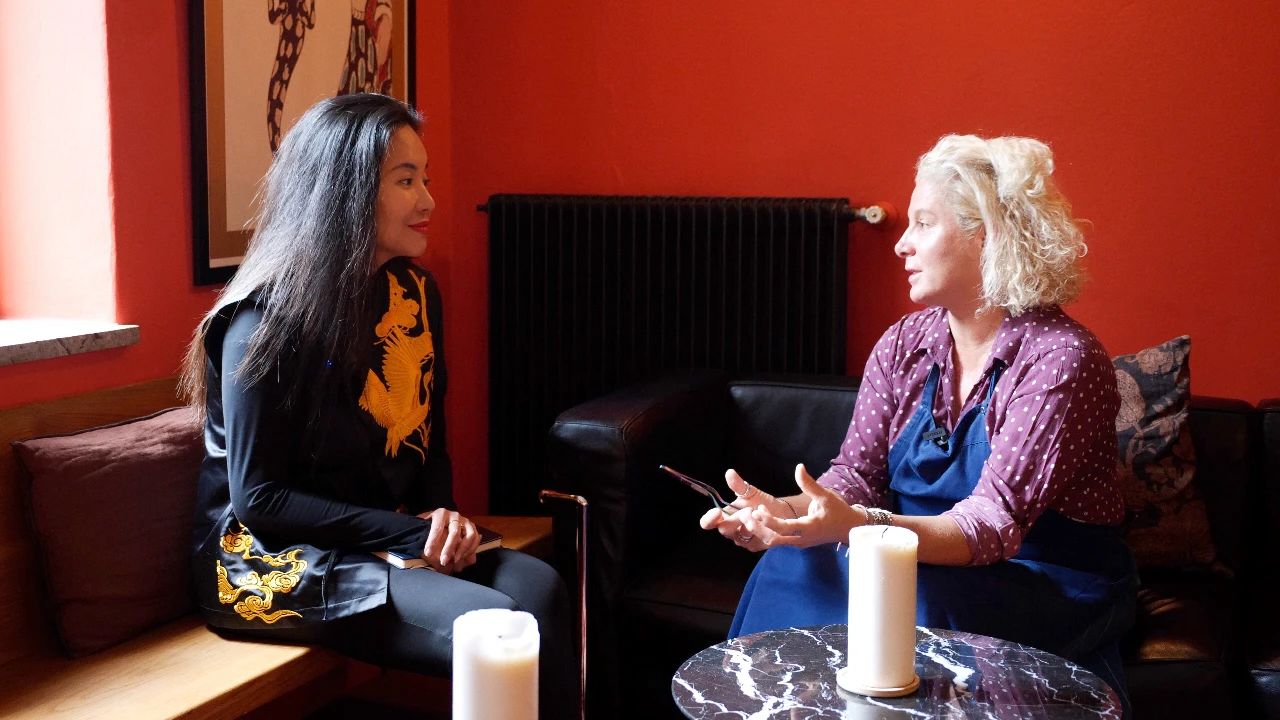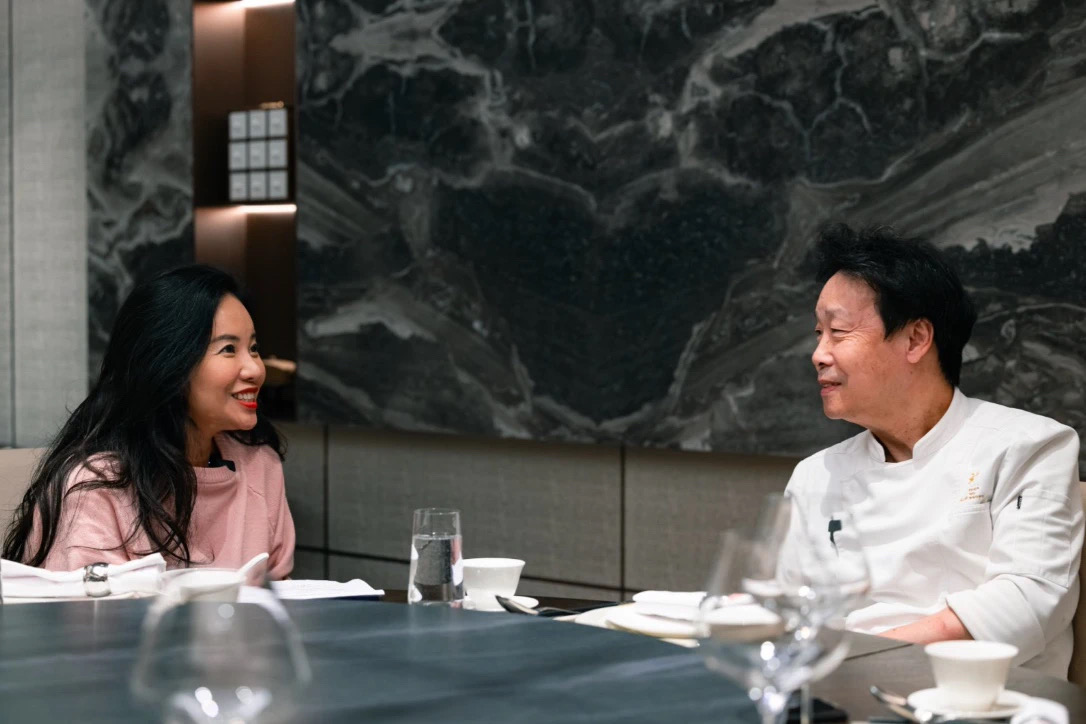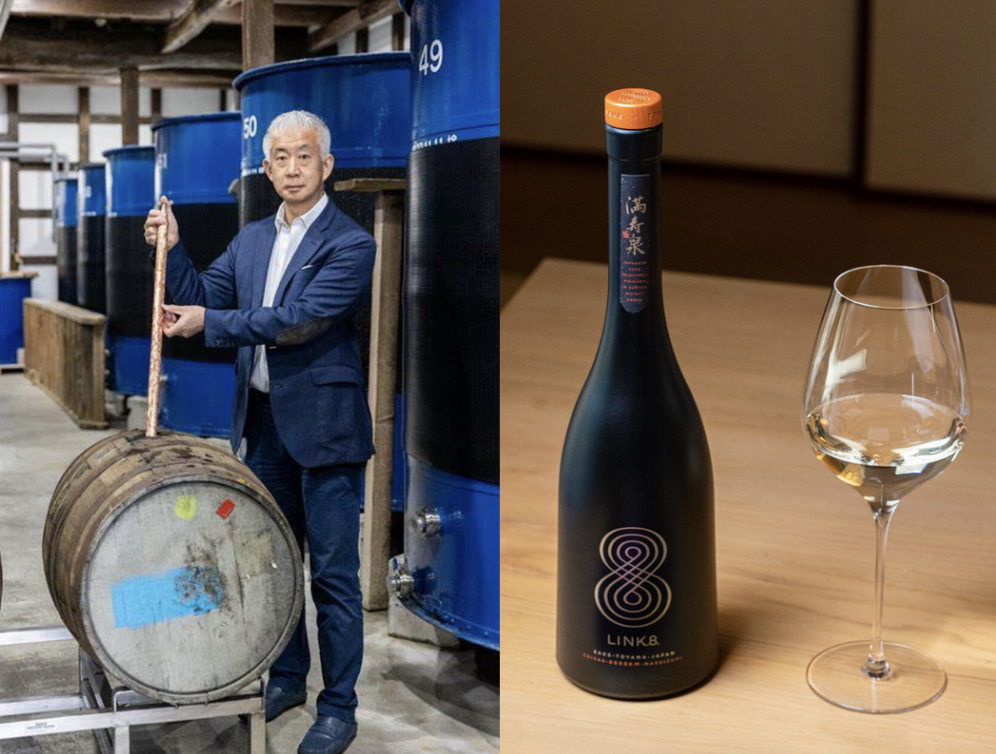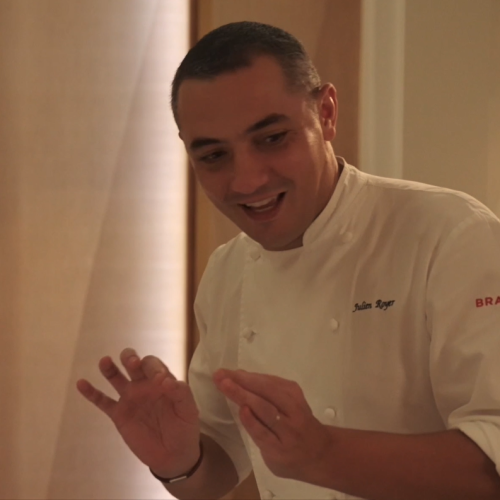The third michelin star makes Jordnær the third restaurant in the Danish capital to be awarded the highest status in the Michelin Guide, the two others being Geranium and noma.
Jordnær in Copenhagan@Jocelyn华姐的TastyTrip
Jordnær’s story is not your average restaurant story. It’s the tale of a former gang member who found the right path in life through unconditional love for his wife and gastronomy, and within just seven years, created a three Michelin-starred restaurant in a modest three-star hotel in the suburbs of Copenhagen while also caring for six children. It’s pure talent and dedication. It’s a drama and a fairytale. It’s a love story—now three Michelin-starred.
In early May this year, I visited Jordnær. At that time, we didn’t know that it would become Denmark’s new three-star restaurant by the end of the month. We took a taxi from the center of Copenhagen, and the drive took about 20 minutes – not far at all. The warm sunlight bathed us, and the outskirts were beautiful. A three-star restaurant in a three-star hotel—there was no derogatory implication, but rather a sense of warmth and approachability.
Jordnær, which directly translates to “grounded” or “down-to-earth,” also represents a kind-hearted personality who knowshis value and understands what is right. Therefore, “grounded” has a positive meaning, and “Jordnær” is also the ethos of the restaurant. “We want to provide a high-end dining experience without losing humanity, showing kindness rather than being aloof. Our industry is about making people happy, and we remember that every day. People come to the restaurant for good food and hospitality, and only when we are whole ourselves can we make our guests feel comfortable. This is what my wife Tina and I hope our guests feel from us,” said Jordnær’s head chef Eric Vildgaard sincerely, speaking openly and with no pretense.

The interior of Jordnær
Love Conquers All: From Crime to Cuisine
The reason behind Eric’s venture into his own restaurant is quite compelling. Initially, his wife Tina Kragh Vildgaard hired him as the head chef for a project in the northern part of Zealand, but it wasn’t what he had dreamed of. Eric felt he couldn’t fulfill his ambitions there. Then he and Tina fell in love and discussed the idea of opening their own restaurant. They decided to give it a try, but they started with no money, needing to care for six children and having no investors. Their initial financial foundation came from selling a Rolex watch and a diamond ring, which they used to buy the necessary equipment for the restaurant. In the early days, they supported the restaurant’s finances by hosting weddings, funerals, confirmations, birthdays, baptisms, and conferences at Jordnær. For the first two to three years, hotel guests even had breakfast in the now-famous dining rooms of the restaurant.
Even with full bookings, the profit margin, as with all fine dining establishments, is notthat high. They needed space, plates, and everything to get started, so they contacted the Arp-Hansen Hotel Group, the owner of the hotel where Jordnær is now located, and rented a corner of the hotel. It’s a three-star hotel just outside Copenhagen, only about a 20-minute drive away. “We started from zero, and now we are here. We are still at the Gentofte Hotel, and we are very happy. I think we have achieved a lot here. This is a love story; Tina trusted my ambition to have a restaurant, guided me, and she is the smart one in the operation. Without her, there would definitely be no Jordnær,” Eric said with a smile.

Chef Eric and Restaurant Manager Tina
“She makes me better every day. As I said, I wouldn’t be here today without her, and the restaurant wouldn’t exist because she is the backbone of the restaurant. She gave me a platform where I can cook my passion, and she emphasizes that through her presence, which the guests don’t always see. She manages all the behind-the-scenes communication. Before the guests enter, she knows everything about who’s coming to the restaurant so we can be ready for them. She is 80% of the operation, and I am just 20%. In a dish, memories will remain while the flavor will fade over time, so the environment in which you eat is very important. The way the service is provided is crucial because memories last a lifetime, while flavors disappear in 10 minutes. The best meal you have is with people you love. It could be something as simple as cacio e pepe, which can be made very well, of course, but if you feel that the dish creates a memory in certain circumstances, then it’s the best dish in the world, even though it’s just pasta with pepper and cheese. So, in this sense, it’s more important to create memories than just to create food.”
noma’s Influence and Culinary Philosophy
I asked, “How did your experience at noma influence you as a chef?” Eric responded, “I worked at noma with René for three years. I grew up in the Nordic region, trained in French cuisine, and was inspired by Japanese cooking. But one thing I learned from working with René at noma is that quality matters. No matter how hard you work with a bad product, you can never turn it into a great dish—it’s impossible. I remember once when there was a problem with an order, and we had to throw away some veal shanks. René didn’t get angry, but he was sad. He looked me in the eyes with a feeling I still remember and said, ‘Because you didn’t pay attention, we killed a calf to throw it in the bin.’ That respect for the product is something I learned from working with René. He truly is a master.”
Eric continued, “It was a fun time, and we created some great things. Since 2006, noma has been on its journey, and it has been a long one. The focus on quality and respect for the product, whether it’s caviar or a flower we pick in nature, we always need to respect it. I believe this is something I learned from working closely with René.”
 Rosette waffle with caviar@restaurantjordnær
Rosette waffle with caviar@restaurantjordnær
Talking about how he defines his cuisine, Eric said, “I would describe my cuisine as ‘product-driven.’ We have a tag line—this is not an advertising stunt, it’s only the best for the guest. So, my cuisine is product-driven. It needs to be ‘delicious,’ but for things to be delicious, they need to be high in quality. The last step, of course, is ‘beautiful,’ because for the guests, it needs to be presented as beautifully as possible, as part of the product journey.”
Jordnær’s menu changes with the seasons, but they have a signature dish. Langoustine jelly with raw langoustine claws, surrounded by seasonal aromatic herbs. Then there’s tomato water from Sicilian tomatoes that grow by the coast, which already have salinity, so nothing needs to be added. They blend the tomatoes and hang them, take the water, and use the pulp to make langoustine bouillon. “So, it’s like a waste product becoming the most beautiful dish on the menu, served in a broken glass bowl. I think this dish represents my DNA—a broken soul presented in different environments, becoming the star of the menu. I am that dish. It emphasizes who I am,” Eric said. This dish also seems to tell a part of Eric’s life, broken and then started anew.
When asked where he gets his inspiration for creating dishes, Eric responded, “My inspiration comes from my past, present, and future. We study the ingredients, and sometimes it can be a taste at first, then a memory. In the early days of the restaurant, you could see strong influences from Nordic cuisine, inspired by René and noma. We still have this dish—shrimp with horseradish sauce, which is a homage to René—it’s my tribute to him. He had that dish here and said it was the best version of raw shrimp he had ever had.”

Raw shrimp, horseradish, buttermilk@restaurantjordnær
Eric continued, “Imagine someone so great but not expecting to be inspiring—it’s impossible. Inspired by those ahead of me, I hope to inspire the future generations. I believe that this is the legacy we pass on to each other as chefs. No one owns the right to cook a dish because dishes are emotionally attached to the person who makes them. My inspiration is 100% driven by curiosity towards the best ingredients. Let’s go back to the langoustine dish. For example, when you taste the langoustine, you think of sweetness, which calls for vanilla, then vanilla calls for cognac. So, we created this vanilla-scented sweet bouillon with a bit of savory tone and the essence of tomato water on top, which provides acidity and minerality. So, complexity is perhaps my source of inspiration.”
Menu Design and Thoughtfulness
Eric’s menu design is quite interesting, especially in the appetizers section. For example, the appetizers like caviar, snow crab, and lobster are all umami-forward with higher salinity, giving the taste buds a strongpunch. It’s worth mentioning that although Eric has never been to Japan, he skillfully incorporates many Japanese cooking techniques without any sense of discord.
Originally, after receiving two Michelin stars, they planned to celebrate by buying tickets to Japan, but the pandemic prevented this plan from happening. Eric, however, incorporates many Japanese techniques here and blends them very naturally. This could be because Nordic cuisine itself heavily features seafood, and he used to work at noma where many Japanese elements are used. As a result, Eric’s use of these techniques is very mature, making them feel very natural.
For example, his handling of sashimi and the use of Japanese dashi (soup stock) are very harmonious and not overused, achieving a balanced state.
Before visiting Jordnær, merely looking at photos of the dishes reminded me more of the plating style of Geranium. Both restaurants seem to pursue an aesthetic direction. However, in some ways, Jordnær’s dishes have a more down-to-earth quality and a strongerpunch. For example, the starting appetizers are full of intense umami flavors that deliver a powerful punch, showcasing the unique charm of different cultures blending together.
At the same time, Eric believes that sustainability is not just about the ingredients on the plate but also about the work-life balance of the team. He said, “We can all follow sustainable ethics, but the best products always come from the best environments, and the best environments are organic or sustainable.”
This year’s Michelin Awards in the Nordic countries moved me deeply. Norway’s new starred restaurant, Iris, shines with its unique innovation in an uncharted area. Sweden’s Vyn by Daniel Berlin reopened and regained its two-star status after overcoming family hardships. Finally, Jordnær achieved three Michelin stars independently, without any investors. These touching moments make us re-evaluate the values and significance of the Michelin Guide.

The MICHELIN Guide Ceremony of the Nordic Countries 2024@michelinguide
In conclusion, I would like to quote a passage written by my friend Kristian Brask Thomsen, who has been a close friend, advisor, and head of the agency representing Jordnær since 2019, as I cannot put it better myself:
“True character is often built through adversity. In an industry that seems to be full of shortcuts and fleeting glory, Jordnær stands out, giving us hope that the unique world of restaurants and the magic it brings have not yet lost all their innocence. Jordnær represents pure talent, hard work, and dedication. It’s a drama and a love story. It’s a culinary fairy tale—now crowned with three Michelin stars.”

Chef Eric and Restaurant Manager Tina@restaurantjordnær
Behind the Scene:Where to eat in Copenhagen?
@Jocelyn华姐的TastyTrip Youtube


